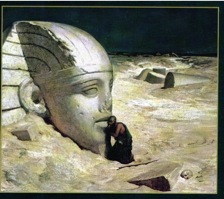
“Have you ever read a law which requires you to pay a Federal income tax?”
So goes the question Aaron Russo asks random people on the street in the first minutes of a 15 minute preview of his upcoming documentary “America: Freedom to Facism”.
The only thing startling about this question is that it reveals just how little people know of our government and the Constitution itself. Here, for example, is the 16th Amendment to that document, the foundation for ALL law in this country:
Passed by Congress July 2, 1909. Ratified February 3, 1913.
The Congress shall have power to lay and collect taxes on incomes, from whatever source derived, without apportionment among the several States, and without regard to any census or enumeration.
Further still, the IRS is empowered to collect the the income tax from TITLE 26-Subtitle A-CHAPTER 1-Subchapter A-PART I - § 1. The actual law can be found at Title 26.
Seems pretty clear cut, doesn’t it? Yet, critics will claim this amendment was never properly ratified due to spelling and grammatical differences among the approving states back in 1913. Those differences were considered so trivial in light of previous problems on amending the Constitution that a judge tossed out challenges to the ratification and the courts have done the same ever since.
The next issue has to do with a group who sought to sue the Federal government on the basis of demanding an answer to this alleged question. The case was brought before Federal judge Emmet Sullivan who ruled in favor of the United States when it filed a motion to dismiss. What does this film say happened? Check out this screenshot:
 The truth is that Sullivan’s decision cited the US Supreme Court and upheld their decision that “the First Amendment does not impose any affirmative obligation on the government to listen, to respond or, in this context, to recognize the association and bargain with it”.
The truth is that Sullivan’s decision cited the US Supreme Court and upheld their decision that “the First Amendment does not impose any affirmative obligation on the government to listen, to respond or, in this context, to recognize the association and bargain with it”.So much for that alleged guarantee Russo would have you believe.
Back to his questions on the street.

In this shot, Russo is asking the pretty lady if she knew the Federal Reserve was a private bank and not a Federal agency. Her response is obviously what Russo hoped for, though he doesn’t bother explaining what the Federal Reserve actually is in, you know....reality.
The “Fed” as it is commonly known is not a central bank but a system of banks spread across the nation. It is governed by a Board and a Chairman, both of which are appointed by the President. In addition to authorization for its creation by the Federal Reserve Act of 1913, the Fed is a direct offshoot of Federal programs and agencies in much the same way as the Defense Department contracts private companies for production of weapons systems. The private banks submit to Federal oversight and deposit fractions of their holdings into the 12 Reserve banks which issue stock to the member banks. The member banks can then earn some measure of income from that stock as compensation for their lost revenue from the interest of the deposited funds in the Fed.
Their deposits are what allows the government to avoid the kind of panic as occurred in 1907.
Then, there is this guy:

Ruppert claims the Federal Reserve is owned by private banks followed by “we don’t who all those private banks are”.
Sure we do. The Federal Reserve is comprised of 12 regional banks. They are:

Boston A 1
New York B 2
Philadelphia C 3
Cleveland D 4
Richmond E 5
Atlanta F 6
Chicago G 7
St Louis H 8
Minneapolis I 9
Kansas City J 10
Dallas K 11
San Francisco L 12
Member banks hold stock in each of the Federal banks through the deposit of a certain portion of their overall holdings. Those member banks are any which bear the FDIC Insured brand, including your local bank.
More to come in future posts.


No comments:
Post a Comment